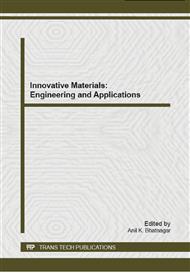p.8
p.14
p.18
p.24
p.28
p.34
p.40
p.45
p.51
Energetic Studies on the B Effect on the Oxidation of γ-TiAl Alloys
Abstract:
The energetic study of B effects on the oxidation of γ-TiAl alloys are performed by using the first-principles method based on Density Functional Theory (DFT) in this paper. The surface and interface segregatation of B as well as of the surface adsorption of O are discussed. B is found to preferentially segregat to TiAl subsurface with respect to γ-TiAl bulk. The B segregation at surface decreases oxygen coverage in the initial oxidation process of γ –TiAl alloys, thereby it is beneficial to the decrease of the growth of γ–TiAl alloys oxide film. In the initial oxidation process, oxygen prefers to stay in the vicinity of surface Ti atoms, and B addition is beneficial for the decrease of the growth of A12O3 and TiO2. After the formation of Al2O3 oxide film, B is energetically favoured stayed at interstitial site of α-Al2O3 (0001)/γ-TiAl (111) interface, and enhances the adhesion of this interface.
Info:
Periodical:
Pages:
28-33
Citation:
Online since:
October 2014
Authors:
Price:
Сopyright:
© 2014 Trans Tech Publications Ltd. All Rights Reserved
Share:
Citation:


